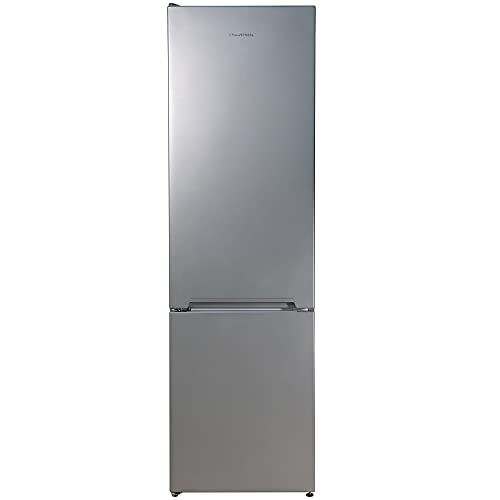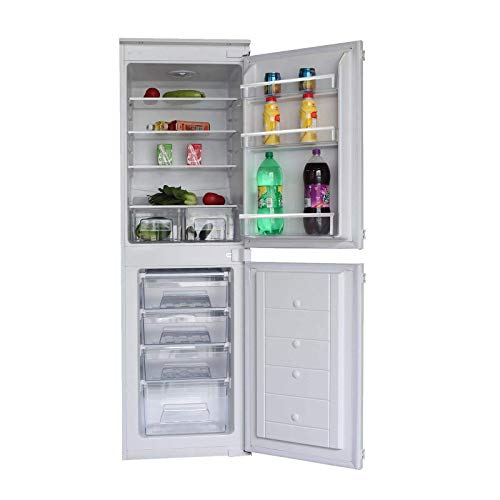Estelle Pearson
Blog entry by Estelle Pearson
Understanding Fridges and Freezers: The Essential Kitchen Appliances
Refrigerators and freezers are two of the most vital devices in contemporary kitchens. These appliances serve an important function in food preservation and waste reduction by guaranteeing that disposable items remain fresh and safe for usage. This short article dives into the various kinds of fridges and freezers, their performances, and important considerations for selection and maintenance.
Types of Refrigerators
The marketplace offers a range of refrigerator types, each developed to meet various consumer requirements. Below is a list of the most common kinds of fridges:
Top-Freezer Refrigerators
- Most typical type.
- Freezer compartment is situated above the refrigerator area.
- Typically more inexpensive and energy-efficient.
Bottom-Freezer Refrigerators
- Freezer is located at the bottom.
- Allows easier access to fresh items at eye level.
- Often includes pull-out drawers for much better company.
Side-by-Side Refrigerators
- Refrigerator and freezer areas are nearby.
- Ideal for narrow cooking areas and enables easy access to both compartments.
- Typically comes with water and ice dispensers.
French Door Refrigerators
- Integrates a bottom freezer with double doors at the top.
- Offers sufficient storage and stylish designs.
- Typically includes features like temperature-controlled drawers.
Compact Refrigerators
- Smaller size suitable for limited spaces.
- Typically utilized in dorm rooms, studio apartments, or as secondary fridges.
Table 1: Comparison of Refrigerator Types
| Type | Benefits | Drawbacks | Normal Size |
|---|---|---|---|
| Top-Freezer | Cost effective, energy-efficient | Less practical access to the freezer | 14-30 cu. ft. |
| Bottom-Freezer | Much easier access to fresh food | Freezer can be more difficult to arrange | 19-30 cu. ft. |
| Side-by-Side | Easy access, water/ice dispenser | Narrow vs. storage space | 22-30 cu. ft. |
| French Door | Stylish, roomy, arranged | More expensive | 20-30+ cu. ft. |
| Compact | Space-saving, portable | Minimal storage | 1.7-5.5 cu. ft. |
Types of Freezers
Freezers are a similarly crucial appliance for food preservation. They are available in various styles developed to fit different household requirements. Consider the list below types:
Upright Freezers
- Operate like a basic refrigerator with vertical storage.
- Simpler to arrange with racks and compartments.
Chest Freezers
- Big, horizontal style usually using more storage space.
- Maintains temperatures much better during power interruptions.
- More energy-efficient than upright designs.
Portable Freezers
- Compact systems ideal for outdoor activities or little areas.
- Typically utilized for camping trips or as short-term storage.
Table 2: Comparison of Freezer Types
| Type | Advantages | Disadvantages | Typical Size |
|---|---|---|---|
| Upright Freezer | Easier to organize | Less energy-efficient, more flooring space | 5-20 cu. ft. |
| Chest Freezer | Holds more items, energy-efficient | Harder to organize | 5-25 cu. ft. |
| Portable Freezer | Compact and versatile | Restricted storage capacity | 1-10 cu. ft. |
Key Features to Consider
When choosing a fridge or freezer, consumers need to keep in mind numerous features that can boost performance:
- Energy Efficiency: Look for designs with the ENERGY STAR accreditation to save money on electrical power bills.
- Storage Capacity: Evaluate storage requirements based upon household size and consuming practices.
- Temperature level Control: Some devices offer digital controls for exact temperature level settings.
- Adjustable Shelving: Customizable shelving permits optimal organization.
- Water and Ice Dispenser: Offers convenience however can use up important area inside.
- Noise Level: Sound rankings can affect comfort, particularly in open-concept homes.
Pros and Cons of Having a Fridge and Freezer
While fridges and freezers are indispensable innovations, they also have particular benefits and drawbacks:
| Pros | Cons |
|---|---|
| Protect food lifespan and lower waste | Need regular upkeep |
| Permit bulk purchasing and meal prepping | Can be expensive to buy and run |
| Deal convenience and quick access to food | Inhabit considerable kitchen area area |
Maintenance Tips
To ensure longevity and ideal efficiency of fridges and freezers, consider the following upkeep pointers:
- Regular Cleaning: Clean the interior and outside occasionally to prevent buildup of dirt and bacteria.
- Check Seals: Inspect door seals routinely for leaks to maintain effectiveness.
- Temperature level Settings: Keep the fridge at 34-38 ° F and the freezer at 0 ° F for optimum food preservation.
- Defrost as Needed: Chest freezers need to be defrosted frequently to keep effectiveness.
- Clear Air Vents: Ensure that airflow isn't blocked to improve energy effectiveness.
FAQs About Fridges and Freezers
Q1: How long can food be stored in a freezer?A: Most foods can be kept in a freezer for several months. Meats and poultry frequently last 4-12 months, while vegetables can last up to 8-12 months.

Q2: How often must I clean my fridge and freezer?A: It is a good idea to clean your fridge and freezer every 3 to 6 months, or as required when spills take place. Q3: Can I put hot food straight in the fridge?A: It is suggested to cool hot food to room temperature before putting it in the fridge to avoid
raising the temperature level inside the device. Q4: Why is my fridge running constantly?A: This could be due to a malfunctioning thermostat, clogged coils, or door seals that aren't working effectively. Fridges and freezers are vital
possessions to modern homes, providing vital services for food storage and conservation.
Understanding the numerous types, functions, and maintenance requirements can help customers choose the right appliances for their needs and maximize their performance. Accepting energy-efficient designs not only supports sustainable practices however also adds to significant cost savings on energy costs, making informed options more essential than ever.